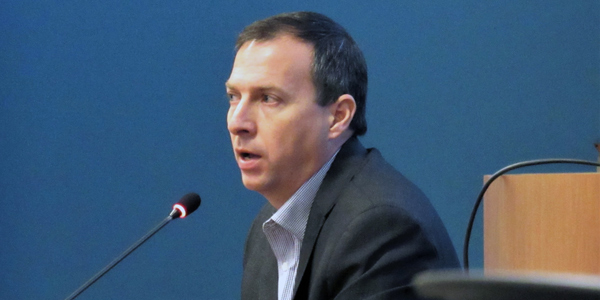By Amanda Durish Cook
CARMEL, Ind. — MISO and PJM expect to begin implementing a two-part remedy to their double-charging of congestion fees on pseudo-tied generation early next year.
MISO and PJM began collaborating to remove the overlapping congestion charges soon after the first complaint about the issue was filed with FERC last year. Stakeholders have lodged five complaints against the RTOs, including filings last year by Tilton Energy (EL16-108), American Municipal Power (EL17-29, EL17-37) and Northern Illinois Municipal Power Agency (EL17-31). Dynegy and Illinois Power Marketing filed jointly against MISO in March and added a motion to consolidate the previous complaints (EL17-54).
In an update to FERC on Nov. 22, the RTOs said their plan to address the complaints will ultimately treat pseudo-tie transactions like dynamically scheduled interchange transactions, in which two parties agree on a metered energy purchase and schedule it in both the day-ahead and real-time markets. The original value is first estimated then updated after delivery.
The first stage of the plan — slated to be in place by March — adds market-to-market settlement and day-ahead coordination of pseudo-tie transactions to the RTOs’ joint operating agreement. The second stage will have the RTOs alter their individual tariffs to address congestion charges, credits, rebates and hedges.
“There’s been several challenges with the modeling on these ever since they’ve entered the market,” PJM Director of Energy Market Operations Tim Horger said during a Nov. 29 Joint and Common Market meeting of the two RTOs.
The RTOs last month filed Tariff revisions (ER18-136, ER18-137) that would enable them to factor pseudo-tie firm flow entitlements into the day-ahead market, with the attaining balancing authority modeling the impact on flowgate capacity. In real-time M2M settlements, MISO and PJM will account for pseudo-tie market flows in payment formulas, so that charges between RTOs exclude the impacts of pseudo-tie resources on flowgates in the attaining balancing authority’s calculations, ending the double-counting of congestion on flowgates.
Horger said the change comes down to modeling “proper limits in the day-ahead market.”
“PJM was modeling limits … that weren’t reflective of what the congestion actually was,” Horger said. MISO and PJM have been using a temporary rebate program until they’re authorized to include pseudo-ties in the day-ahead scheduling process. (See MISO, PJM Propose Solution to Pseudo-Tie Congestion Problem.)
The RTOs hope to win FERC approval by March. “We’re expecting some answers and solutions shortly,” Horger said.
Phase 2
MISO and PJM will wait until later next year to roll out the second phase of the congestion remedy because it requires more complicated Tariff changes and complex software changes. Those revisions will require an attaining balancing authority to issue either refunds or financial transmission rights to cover the day-ahead congestions costs paid by pseudo-ties with load contracts. In the real-time market, credits and charges would be levied on pseudo-tie transactions based on deviations from their day-ahead schedules. The RTOs’ would leave open the option for the native balancing authority to accept a pair of day-ahead virtual transactions for pseudo-tie transactions that have FTR hedges.
“It does require more extensive software changes because it involves a hedging mechanism for deviations between day-ahead and real-time. And it may also involve refunds,” Horger said.
PJM is looking into developing a new product exclusively for pseudo-tie owners out of PJM that would allow them to hedge in the day-ahead market, similar to existing virtual transactions, he said. MISO, however, plans to hedge using its existing virtual transaction process because of the limited capability of its market system platform.
“If there’s an under-collection or over-collection in the MISO market, it’s going to be trued up with this market flow credit,” Horger said.
The RTOs will have separate filing and implementation dates for the second stage of the plan, Horger said, with PJM planning to go live in June, with MISO lagging by a few months because of IT-related challenges.
“We’re in the process of implementing a new settlement system, so that’s going to impede our ability to deliver phase two,” said Kevin Vannoy, MISO director of forward operations planning.
Some stakeholders asked if the disparate implementation dates were even possible.
Vannoy said the solutions boil down to Tariff changes that can be made independently. He promised more details on the second phase of the plan in early 2018.
Some MISO stakeholders are hoping the RTO will file a similar plan with SPP, where the potential for double congestion charges also exists, although the RTOs exchange far fewer pseudo-tied megawatts.
“We’re hoping that the pseudo-tie congestion changes will apply to SPP as well,” said Market Subcommittee Vice Chair Megan Wisersky, reporting on activities of MISO’s Seams Management Working Group in October.
MISO Monitor not Pleased
But MISO Independent Market Monitor David Patton said that MISO and PJM have yet to make a filing that will solve the underlying congestion and dispatch issues caused by pseudo-ties.
Patton’s firm, Potomac Economics, filed a protest against the first phase of the overlap solution, saying nothing in the filings “ameliorates the myriad of significant problems” caused by the uptick in resources pseudo-tying from MISO to PJM. The Monitor also argued that FERC could not even fairly evaluate the RTOs’ filing without also evaluating at least 10 other FERC dockets containing complaints against the their pseudo-tie process.
“We hope that FERC will respond to our complaint and bring some rationality to this process,” Patton said at an Oct. 12 Market Subcommittee meeting.
Horger said that for pseudo-ties to function, PJM and MISO must have comparable treatment for external and internal capacity, a binding pro forma agreement and a solution to the RTOs’ double counting of congestion.
“We need to make sure these pseudo-tie external resources are being modeled under the same criteria,” Horger said.





